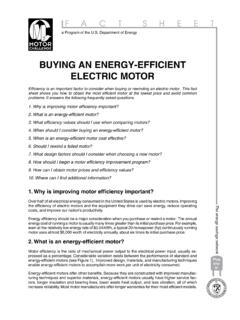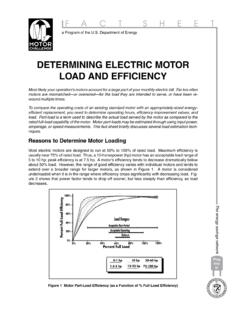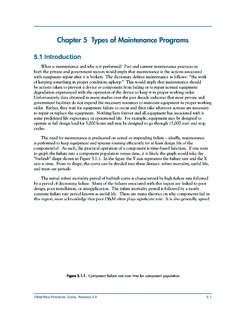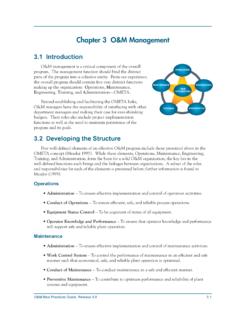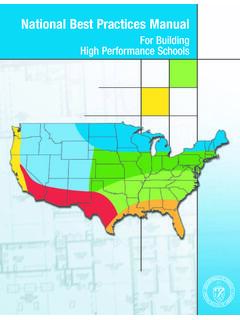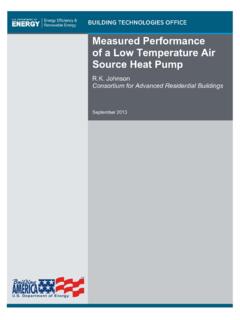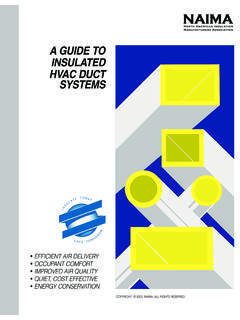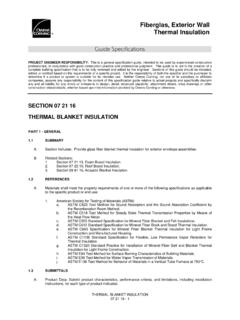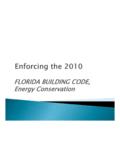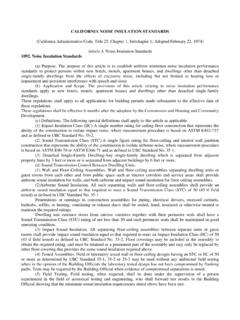Transcription of Insulation Fact Sheet - Energy
1 How Does Insulation Work for You? 25 Determining the R-Value You NeedInsulating a New Home 1013 What Kind of Insulation Should You Buy?DOE/CE-0180 Introduction 1 How Does Insulation Work for You? 2 Does Your Home Need MoreInsulation? 2 Determining the R-Value YouNeed for an Existing House 5 Making Your Decision 6 Before You Insulate 8 Building a New House? SomeThings You Should Know 10 What Kind of Insulation ShouldYou Buy? 13 Make Your Selection 14 Check the Label Before YouBuy 14 Can You Do It Yourself? 14If You Do It Yourself 15If You Have It DoneProfessionally 17 Other Places in Your Home forAdded Insulation 17 Want to Know More? 18 You Must Prevent Moisture Addendum 1 INTRODUCTIONE lectricity bills, oil bills, gasbills - all homeowners pay for one ormore of these utilities, and wish theypaid less.
2 Often many of us do notreally know how to control or reduceour utility bills. We resign ourselvesto high bills because we think that isthe price we have to pay for acomfortable home. We encourageour children to turn off the lights andappliances, but may not recognizethe benefits of insulating the Should You Insulate?Heating and cooling (spaceconditioning) account for 50 to 70%of the Energy used in the averageAmerican home. About 20% goesfor heating water. On the otherhand, lighting and appliances andeverything else account for only 10to 30% of the Energy used in mostresidences. It makes good sense toturn lights and appliances off whenthey are not needed, and you ll saveeven more on your Energy costs ifyou reduce the amount of energyneeded for heating and of EnergyAssistant SecretaryEnergy Efficiency and Renewable EnergyIn this issue: Unless your home was constructed with special attention to Energy efficiency, adding Insulation will probably reduce your utility bills.
3 Much of the existing housing stock in the United States is not insulated to the best level. Older homes are likely to use more Energy than newer homes, leading to very high heating and air-conditioning bills. Even if you own a new home, adding Insulation may save enough money in reduced utility bills to pay for itself within a few years, continue to save you money for as long as you own the home, and increase the resale value of your house. The Crucial Role of Thermal Insulation Inadequate Insulation and air leakage are leading causes of Energy waste in most homes. Insulation saves money and our nation's limited Energy resources. It can also make your house more comfortable by helping to maintain a uniform temperature throughout the house.
4 Walls, ceilings, and floors will be warmer in the winter and cooler in the summer. Insulation can also act as a sound absorber or barrier, keeping noise levels down. It is possible to add Insulation to almost any house. You may be able to do the job yourself if the structural framing is accessible for instance, in unfinished attics or under the floor over an unheated space. Or, you may prefer to hire an Insulation contractor. In either case, it is important to choose and install the Insulation correctly. The amount of Energy you conserve will depend on several factors: your local climate; the size, shape, and construction of your house; the living habits of your family; the type and efficiency of the heating and cooling systems; and the fuel you use.
5 Once the Energy savings have paid for the installation cost, Energy conserved is money saved and the annual savings will increase if utility rates go Priorities It is most important to: Insulate your attic to the recommended level, including the attic door, or hatch cover. Provide the recommended level of Insulation under floors above unheated spaces, around walls in a heated basement or unventilated crawl space, and on the edges of slabs-on-grade. Use the recommended levels of Insulation for exterior walls for new house construction. When remodeling or re-siding your house, consider using the levels recommended for new construction in your existing DOES Insulation WORK FOR YOU? eat flows naturally from a warmer to a cooler space.
6 In the winter, this heat flow moves directly from all heated living spaces to adjacent unheated attics, garages, and basements, or to the outdoors; or indirectly through interior ceilings, walls, and floors wherever there is a difference in temperature. During the cooling season, heat flows from outdoors to the house interior. To maintain comfort, the heat lost in winter must be replaced by your heating system and the heat gained in summer must be removed by your air conditioner. Insulating ceilings, walls, and floors decreases this heat flow by providing an effective resistance to the flow of heat. Insulation is rated in terms of thermal resistance, called R-value, which indicates the resistance to heat flow.
7 The higher the R-value, the greater the insulating effectiveness. The R-value of thermal Insulation depends on the type of material, its thickness, and density. In calculating the R-value of a multi-layered installation, the R-values of the individual layers are added. Installing more Insulation in your home increases R-value and the resistance to heat flow. The effectiveness of an insulatedwall or ceiling also depends on how and where the Insulation is installed. For example, Insulation which is compressed will not give you its full rated R-value. Also, the overall R-value of a wall or ceiling will be somewhat different from the R-value of the Insulation itself because some heat flows around the Insulation through the studs and joists.
8 That is, the overall R-value of a wall with Insulation between wood studs is less than the R-value of the Insulation itself because the wood provides a thermal short-circuit around the Insulation . The short-circuiting through metal framing is much greater than that through wood-framed walls; sometimes the metal wall s overall R-value can be as low as half the Insulation s R-value. With careful design, this short-circuiting can be reduced. More information about whole-wall R-values can be found on the Web page referenced on page YOUR HOME NEED MORE Insulation ? o begin to answer this question, you must first find out how much Insulation you already have and then determine how much more would be cost-effective.
9 Many older homes have less Insulation than homes built today. A qualified home Energy auditor will include an Insulation check as a routine part of an Energy audit. For information about home Energy audits, call your local utility company. State Energy offices are another valuable resource for information. An Energy audit of your house will identify the amount of Insulation you have and need, and will likely recommend other improvements as well. If you don t have someone else inspect your home, you ll need to look HT2 Earth* Well-insulated attics, crawl spaces, storage areas, and other enclosed cavities should be ventilated to prevent excessive moisture build-up.** For new construction, slab on grade Insulation should be installed to the extent required by building codes, or 1.
10 Examples of Where to Insulate1. In unfinished attic spaces, insulate between and over the floor joists to seal off living spaces below.* 1A attic access door2. In finished attic rooms with or without dormer, 2A between the studs of knee walls; 2B between the studs and rafters of exterior walls and roof; 2C ceilings with cold spaces above; 2D extend Insulation into joist space to reduce air All exterior walls, 3A walls between living spaces and unheated garages, shed roofs, or storage areas; 3B foundation walls above ground level; 3C foundation walls in heated basements, full wall either interior or exterior . (See Builder's Foundation Handbook on page 19.) 4. Floors above cold spaces, such as vented crawl spaces and unheated garages.
